Losing weight and staying fit can be achieved effectively from the comfort of your own home. Incorporating a combination of cardiovascular exercises and strength training into your routine can help you burn calories and shed those extra pounds. In this list, we will explore ten powerful exercises that are designed to help you lose weight and improve your overall fitness levels. From high-intensity movements like burpees and jumping jacks to strength-building exercises like squats and lunges, these exercises will challenge your body and accelerate your weight loss journey. Remember to consult with a healthcare professional before starting any new exercise program and to maintain consistency for optimal results.
Losing weight at home can be achieved through a combination of cardiovascular exercises and strength training. Here are ten powerful exercises that can help you burn calories and lose weight:
- Jumping Jacks
- Burpees
- High Knees
- Mountain Climbers
- Squats
- Lunges
- Plank
- Jumping Rope
- Bicycle Crunches
- Plank Jacks
1 - Jumping Jacks
Jumping jacks are a classic and effective exercise for burning calories
and improving cardiovascular fitness. They are a full-body exercise that
engages multiple muscle groups simultaneously.
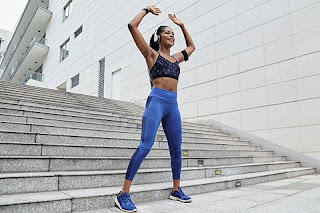 |
- Jumping Jacks
|
To perform jumping
jacks, start by standing with your feet together and your arms relaxed
at your sides. Then, jump while simultaneously spreading your legs out
to the sides and raising your arms above your head. As you land, jump
again and bring your legs back together while lowering your arms to the
starting position.
Repeat this motion for a set amount of time or a
specific number of repetitions. Jumping jacks are a great warm-up
exercise or can be included as part of a high-intensity interval
training (HIIT) workout. They help increase heart rate, improve
coordination, and burn calories, making them an excellent choice for
weight loss and overall fitness.
2- Burpees
Burpees are a highly effective exercise for burning calories and
engaging multiple muscle groups. They provide a full-body workout and
can be done with little to no equipment, making them ideal for home
workouts. 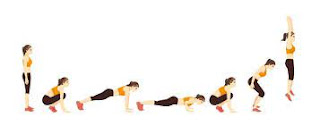 |
| Burpees |
To perform a burpee, start in a standing position with your
feet shoulder-width apart. Next, lower yourself into a squat position
and place your hands on the floor in front of you. Kick your feet back,
extending your legs into a plank position. From there, quickly reverse
the motion by jumping your feet back towards your hands and then
explosively jumping up into the air, reaching your arms overhead. Land
softly and immediately go into the next repetition.
Burpees are intense
and can get your heart rate up, making them a great exercise for
boosting your metabolism and burning calories. They also engage your
core, chest, arms, and legs, providing a comprehensive workout.
Incorporating burpees into your routine can help you lose weight,
increase strength, and improve your cardiovascular fitness.
3 - High Knees
High knees are a dynamic and effective exercise for elevating your heart
rate, burning calories, and improving your overall cardiovascular
endurance. This exercise targets your leg muscles, including your
quadriceps, hamstrings, and calves, while also engaging your core
muscles. 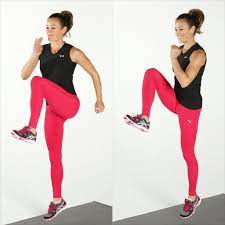 |
| High knees |
To perform high knees, start by standing upright with your feet
hip-width apart. Begin jogging in place, lifting your knees as high as
possible towards your chest while keeping your back straight and
engaging your abdominal muscles. As you lift one knee, the opposite arm
should swing forward. Continue alternating knees and arms in a running
motion, aiming for a quick and controlled pace.
The faster you perform
the exercise, the more intense it becomes. High knees can be performed
as a warm-up exercise, incorporated into a cardio routine, or used in
high-intensity interval training (HIIT) workouts. By incorporating high
knees into your fitness routine, you can increase your calorie burn,
improve your cardiovascular fitness, and strengthen your lower body
muscles.
4 - Mountain Climbers
Mountain climbers are a dynamic and challenging exercise that targets
multiple muscle groups, including the core, shoulders, arms, and legs.
They are a great addition to any at-home workout routine, as they help
improve cardiovascular fitness, burn calories, and strengthen your
muscles. 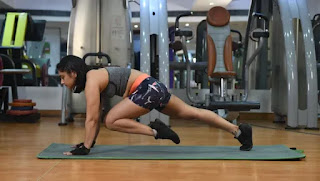 |
| Mountain climbers |
To perform mountain climbers, start in a plank position with
your hands directly under your shoulders and your body forming a
straight line. From this position, engage your core and bring one knee
towards your chest, then quickly switch legs, as if you're running in a
plank position. Maintain a steady and controlled pace, keeping your hips
low and your core engaged throughout the exercise.
The faster you
perform mountain climbers, the more intense the exercise becomes. They
can be included in a circuit training routine, a HIIT workout, or used
as a standalone cardio exercise. Mountain climbers are an effective way
to elevate your heart rate, increase your calorie burn, and strengthen
both your upper and lower body muscles.
5- Squats
Squats are a fundamental and powerful exercise that targets multiple
muscle groups, including the quadriceps, hamstrings, glutes, and core.
They are highly effective for building strength, burning calories, and
improving overall lower body function.
 |
| Squats |
To perform a squat, start by
standing with your feet slightly wider than shoulder-width apart, toes
pointing slightly outward. Keeping your chest up and your back straight,
lower your body by bending your knees and pushing your hips back as if
you are sitting back into an imaginary chair. Go as low as you
comfortably can while maintaining proper form, ideally until your thighs
are parallel to the floor. Make sure your knees are tracking over your
toes and not caving inward.
Drive through your heels and push your body
back up to the starting position. Squats can be performed using just
your body weight or with added resistance such as dumbbells or a barbell
for an extra challenge. They can be incorporated into a strength
training routine or done as a standalone exercise.
Squats are highly
effective for building lower body strength, toning muscles, and boosting
your metabolism. Including squats in your workout routine can help you
achieve weight loss, improve mobility, and enhance overall functional
fitness.
6 - Lunges
Lunges are a powerful exercise that targets the muscles of your lower
body, including the quadriceps, hamstrings, glutes, and calves. They are
highly effective for building strength, improving balance, and toning
your legs and buttocks. To perform a lunge, start by standing tall with
your feet hip-width apart. Take a big step forward with one foot,
keeping your torso upright.
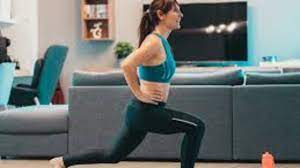 |
| Lunges |
Lower your body by bending both knees until
your front thigh is parallel to the floor, and your back knee is
hovering just above the ground. Make sure your front knee is directly
above your ankle and not extending too far forward. Push through your
front heel to return to the starting position and repeat on the other
leg. Lunges can be performed walking forward or backward, or by staying
in place and alternating legs. They can be done using only your body
weight or with added resistance such as dumbbells or a barbell.
Lunges
are versatile and can be included in a lower body strength workout,
circuit training, or used as a standalone exercise. They help develop
lower body strength, improve stability, and enhance functional movement
patterns. By incorporating lunges into your exercise routine, you can
build lean muscle, burn calories, and enhance your overall lower body
strength and tone.
7- Plank
The plank is a highly effective exercise for strengthening the core
muscles, including the abdominal muscles, lower back, and stabilizing
muscles of the spine. It is a static exercise that engages multiple
muscle groups simultaneously. To perform a plank, start by positioning
yourself face down on the floor.
 |
| plank |
Place your forearms on the ground,
aligning your elbows directly under your shoulders. Extend your legs
straight back, with your toes pressing into the ground. Your body should
form a straight line from head to heels. Engage your core, squeeze your
glutes, and maintain a neutral spine position throughout the exercise.
Hold this position for a specific amount of time, gradually increasing
the duration as your strength improves.
Planks can also be modified by
performing them on your hands instead of your forearms, or by adding
movement variations such as side planks or plank rotations. Planks are
beneficial for improving core stability, enhancing posture, and
developing overall body strength. They can be included in your regular
strength training routine, used as part of a core-focused workout, or
practiced on their own. Regularly incorporating planks into your
exercise regimen can contribute to weight loss, improve core strength,
and support better overall functional fitness.
8- Jumping Rope
Jumping rope, also known as skipping, is a highly effective
cardiovascular exercise that can be done in the comfort of your own
home. It is a full-body workout that helps burn calories, improve
coordination, and boost cardiovascular endurance. To jump rope, you'll
need a skipping rope that is appropriate for your height.
Start by
holding the handles of the rope in each hand, with your palms facing
inward. Position the rope behind you and swing it over your head and in
front of your body, while simultaneously jumping over the rope with both
feet. Aim for a smooth and continuous motion, landing softly on the
balls of your feet.
As you progress, you can incorporate variations such
as alternating single-leg jumps, double unders (spinning the rope twice
under your feet with each jump), or crisscrosses (crossing your arms at
the wrists while jumping). Jumping rope can be adjusted to suit your
fitness level and can be incorporated into various workouts, including
high-intensity interval training (HIIT) or circuit training.
It provides
a high calorie-burning workout, improves cardiovascular fitness, and
helps tone your legs and core muscles. It's important to start with a
suitable length of time and gradually increase your duration as your
stamina improves. Jumping rope is a fun and challenging exercise that
can be a valuable addition to your weight loss and fitness routine.
9- Bicycle Crunches
Bicycle crunches are an effective abdominal exercise that targets the rectus abdominis (six-pack muscles) and the obliques. They are known for their ability to engage the core muscles and help strengthen and tone the abdominal region. To perform bicycle crunches, follow these steps:
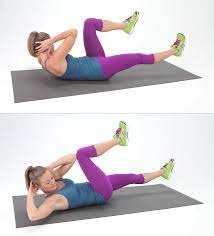 |
| Bicycle crunches |
- Lie flat on your back on a mat or a comfortable surface. Bend your knees and place your hands behind your head, elbows pointing out to the sides.
- Lift your shoulder blades slightly off the ground, engaging your core muscles.
- Simultaneously bring your right knee toward your chest while lifting your left shoulder toward your right knee. Keep your left leg extended and hovering off the ground.
- Straighten your right leg while bringing your left knee toward your chest, and simultaneously twist your upper body, bringing your right shoulder toward your left knee.
- Continue alternating sides in a pedaling motion, as if you're riding a bicycle. Exhale as you twist and bring your shoulder toward your knee, and inhale as you switch sides.
- Maintain a controlled and steady pace throughout the exercise, focusing on the contraction of your abdominal muscles. Aim for 10-20 repetitions on each side, or as many as you can comfortably perform with good form.
Bicycle crunches can be incorporated into your core workout routine or combined with other exercises to create a comprehensive abdominal workout. They help strengthen your core, improve abdominal definition, and enhance overall stability and balance. Remember to listen to your body and stop if you experience any pain or discomfort.
10- Plank Jacks
Plank jacks are a dynamic variation of the traditional plank exercise that adds an element of cardiovascular intensity. They target the core muscles, along with the shoulders, arms, and legs. To perform plank jacks, follow these steps:
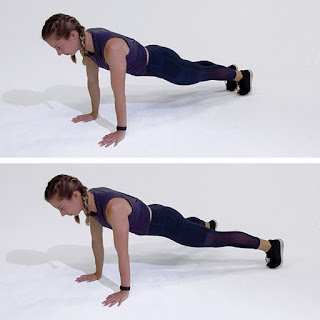 |
| Plank jacks |
- Begin in a high plank position with your hands directly under your shoulders and your body forming a straight line from head to heels.
- Engage your core and maintain a stable position.
- Jump both feet out wide, similar to a jumping jack motion, while keeping your upper body steady and your hands firmly planted on the ground.
- Quickly jump your feet back together to return to the starting position.
- Continue the jumping motion, alternating between jumping your feet out wide and bringing them back together, while maintaining the plank position.
Focus on keeping your core engaged and your back flat throughout the exercise. Keep a steady rhythm and control the movement to avoid any excessive strain on your lower back or wrists. Aim for a specific number of repetitions or perform plank jacks for a set duration of time.
Plank jacks can be incorporated into your full-body workout routine, used as part of a high-intensity interval training (HIIT) workout, or added as a cardio component to your core-focused exercises. They help increase the heart rate, boost calorie burn, improve core stability, and enhance overall muscular endurance.
Important Tips to Lose weight at Home
Losing weight at home requires commitment, consistency, and a well-rounded approach. Here are some important tips to help you on your weight loss journey:
Set realistic goals: Establish achievable and realistic weight loss goals. Focus on making gradual, sustainable changes to your lifestyle rather than seeking quick fixes.
- Create a calorie deficit: Weight loss occurs when you consume fewer calories than you burn. Track your daily calorie intake and aim for a moderate calorie deficit, usually around 500-1000 calories per day, through a combination of diet and exercise.
- Maintain a balanced diet: Consume a variety of nutrient-dense foods, including lean proteins, whole grains, fruits, vegetables, and healthy fats. Avoid or limit processed foods, sugary drinks, and high-calorie snacks. Portion control is key.
- Stay hydrated: Drink plenty of water throughout the day. Water helps keep you hydrated, aids digestion, and can contribute to a feeling of fullness.
- Include regular physical activity: Engage in a combination of cardiovascular exercises (like jumping jacks, burpees, or jumping rope) and strength training exercises (such as squats, lunges, or resistance band workouts) to maximize calorie burn, build muscle, and improve overall fitness.
- Create a structured workout routine: Plan and schedule your workouts in advance to ensure consistency. Aim for at least 150 minutes of moderate-intensity aerobic activity or 75 minutes of vigorous-intensity aerobic activity per week, along with strength training exercises two or more days a week.
- Stay consistent and be patient: Sustainable weight loss takes time. Be consistent with your healthy eating habits and exercise routine, and avoid getting discouraged by occasional setbacks. Stay patient and trust the process.
- Prioritize sleep: Aim for quality sleep of 7-9 hours per night. Sufficient sleep helps regulate appetite hormones, supports overall well-being, and can contribute to weight management.
- Manage stress levels: High stress levels can affect your weight loss efforts. Incorporate stress management techniques such as meditation, deep breathing exercises, or engaging in activities you enjoy.
- Seek support and accountability: Share your weight loss goals with friends, family, or join online communities that provide support and encouragement. Having a support system can help you stay motivated and accountable.
Remember, it's essential to consult with a healthcare professional before starting any new exercise or diet plan, especially if you have any underlying health conditions. They can provide personalized guidance based on your specific needs and goals.
How to Maintain Healthy Weight?
Maintaining a healthy weight requires adopting sustainable habits and lifestyle choices. Here are some tips to help you maintain a healthy weight:
- Practice portion control: Be mindful of your portion sizes and listen to your body's hunger and fullness cues. Avoid oversized portions and practice eating until you are satisfied, not overly full.
- Eat a balanced diet: Include a variety of nutritious foods in your diet, such as fruits, vegetables, whole grains, lean proteins, and healthy fats. Focus on whole, unprocessed foods and limit your intake of sugary snacks, processed foods, and sugary beverages.
- Practice mindful eating: Slow down and pay attention to your eating experience. Eat without distractions and savor each bite. This helps you recognize satiety and prevent overeating.
- Stay physically active: Engage in regular physical activity to maintain your weight and overall health. Find activities you enjoy and aim for a combination of cardiovascular exercises, strength training, and flexibility exercises. Strive for at least 150 minutes of moderate-intensity aerobic activity or 75 minutes of vigorous-intensity aerobic activity each week.
- Prioritize sleep: Aim for 7-9 hours of quality sleep each night. Sufficient sleep supports healthy metabolism, hormone regulation, and overall well-being, which can aid in weight management.
- Stay hydrated: Drink an adequate amount of water throughout the day. Water helps maintain proper bodily functions, supports digestion, and can contribute to a feeling of fullness, helping you manage your weight.
- Monitor your weight regularly: Regularly weigh yourself or monitor your body measurements to keep track of any fluctuations. This helps you catch any weight gain early and make necessary adjustments to your diet and exercise routine.
- Manage stress levels: Chronic stress can contribute to weight gain. Implement stress management techniques like exercise, meditation, deep breathing, or engaging in activities you enjoy to reduce stress levels and support healthy weight maintenance.
- Build a support system: Surround yourself with a supportive network of friends, family, or even an online community focused on health and wellness. Having a support system can provide encouragement, accountability, and motivation on your weight maintenance journey.
- Be patient and kind to yourself: Maintaining a healthy weight is a lifelong commitment. Embrace the journey, celebrate your progress, and practice self-compassion. Avoid extreme diets or quick fixes, and instead focus on making sustainable lifestyle changes.
Remember, it's important to consult with a healthcare professional or a registered dietitian for personalized advice based on your specific needs and goals. They can provide tailored recommendations and support you in maintaining a healthy weight.





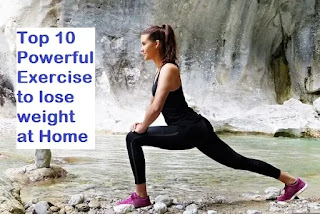


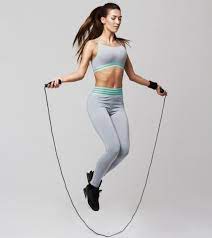






No comments:
Post a Comment